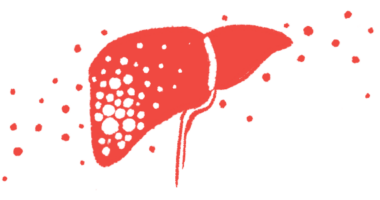CEP in boy with repeat nosebleeds treated by removing his spleen
Surgery needed to 'prevent the breakdown of platelets and other blood cells'

Surgical removal of the spleen effectively eased the signs and symptoms of severe congenital erythropoietic porphyria (CEP) in a 10-year-old boy with recurrent nose bleeds, according to a recent case report.
“Our patient’s repeated [nose bleeds] is a rare and unreported clinical manifestation of this illness,” the scientists wrote. “We hope our findings can advance knowledge about congenital erythropoietic porphyria, its rare and atypical presentation, and treatment options.”
The case study, “Congenital erythropoietic porphyria presenting with recurrent epistaxis: a case report,” was published in the Journal of Medical Case Reports.
Boy diagnosed with congenital erythropoietic porphyria at age 10
CEP, also called Günther disease, is the rarest form of porphyria and marked by disease symptoms that are present from birth. Most cases are caused by mutations in the UROS gene, leading to the toxic buildup of molecules called porphyrins in different parts of the body, including red blood cells.
As with other disease types, CEP is characterized by severe light sensitivity leading to the development of skin lesions. Other symptoms include red/brown urine, teeth staining, and hemolytic anemia (low red blood cell count caused by their destruction).
A 10-year-old boy in Pakistan came to a hospital after experiencing recurrent nosebleeds (epistaxis) for six months, which was “an unusual presentation for this condition,” the scientists wrote.
He also had skin blisters that worsened with sunlight exposure, while his siblings and parents were unaffected.
In the past, doctors examined him for skin blisters that appeared on his face, neck, hands, and feet, and for a change in the color of his urine. He was given moisturizing creams for the lesions and told to avoid sunlight “due to photodermatitis,” the scientists noted, adding “he was not evaluated thoroughly.”
A hospital examination found pale brown teeth, noticeable facial scars, distorted facial features, and thin, sparse hair. The boy’s height and weight were low for his age, and his right index finger was abnormally short with an underdeveloped and detached nail.
He also had a low platelet count, and his red blood cells were smaller than normal and unusually shaped. Additional tests showed high levels of porphyrins in his blood and urine, particularly uroporphyrin and coproporphyrin. Based on all of these findings, the boy was diagnosed with CEP. Further genetic testing was not available.
According to the scientists, the boy’s recurrent nose bleeds were explained by low levels of platelets, which normally form blood clots to stop or prevent bleeding.
Although he was prescribed medications and used protective clothing and sunscreen, his condition did not improve.
Due to the severe nature of his disease, clinicians decided to surgically remove his spleen “to prevent the breakdown of platelets and other blood cells.” He received various medications for pain and inflammation, as well as blood transfusions.
Five days after surgery, the boy was discharged with recommendations to protect his skin and eyes. During follow-up visits, there were no reports of nosebleeds, with blood tests showing platelet levels within the normal range.
Over six months, his anemia, general health, and quality of life improved significantly, with no further nose bleeds or skin blistering.
“Early detection of CEP symptoms is crucial for accurate diagnosis and treatment,” the scientists wrote. “While CEP symptoms may overlap with other porphyrias, specific characteristics such as age of onset, severity, laboratory test patterns, gene mutations, and enzyme abnormalities can aid in diagnosis.”







